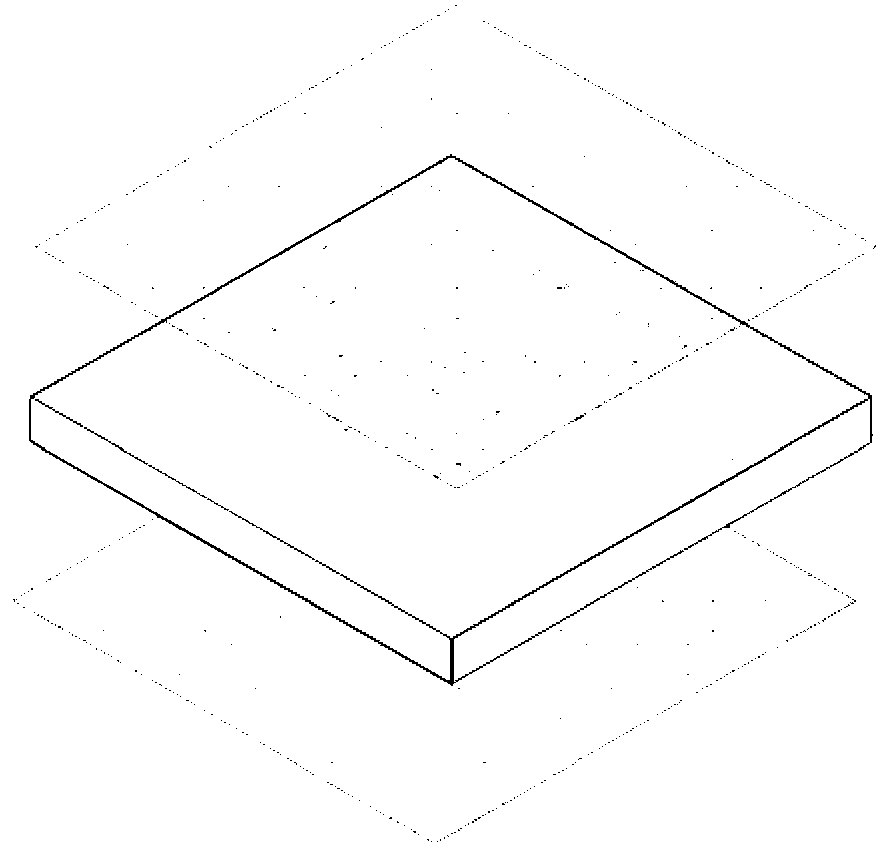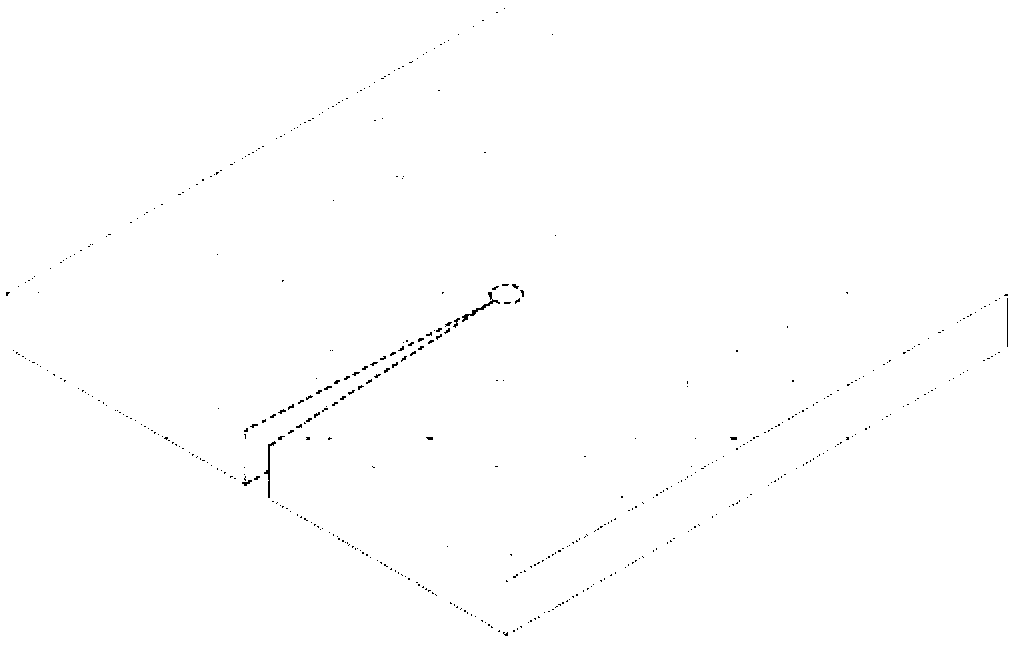Ecological cushion
An ecological mat and plant material technology, applied in the field of fruit tree drought-resistant and moisture-preserving ecological mat, can solve the problems of insufficient regional precipitation, high cost, uneven temporal and spatial distribution of precipitation, etc., reduce surface water evapotranspiration, ease surface temperature changes, and be simple and convenient to implement Effect
- Summary
- Abstract
- Description
- Claims
- Application Information
AI Technical Summary
Problems solved by technology
Method used
Image
Examples
Embodiment 1
[0032] Embodiment 1, hard ecological mat
[0033] 1) The composition and characteristics of plant material a and plant material b are shown in the data in Table 1.
[0034] Plant material a can be cut into specifications within the corresponding range by raw materials, and plant material b can be processed by existing crushing machinery in production. The length and diameter in the table refer to the average length and average diameter respectively.
[0035] Table 1 Characteristics of different types of plant materials
[0036]
[0037] 2) Mix 60 parts by mass of mushroom dregs, 15 parts by mass of plant material a and 20 parts by mass of plant material b, then add 5 parts by mass of starch glue, adjust the water content to 130%, and press it with a rolling machine to produce In flake form, after drying below 80°C until the water content is 15%, pack or pile into stacks for use, its dry density is 406.4kg / m 3 . The ecological mat can be cut into different sizes after pre...
Embodiment 2
[0041] Embodiment 2, soft ecological mat
[0042] 1) The composition and characteristics of plant material a and plant material b are shown in the data in Table 2.
[0043] Table 2 Characteristics of different types of plant materials
[0044]
[0045] 2) Mix 50 parts by mass of mushroom dregs, 30 parts by mass of plant material a and 20 parts by mass of plant material b until the water content reaches 85%, and add a degradable fiber net layer (polyester) on the upper surface and the lower surface Succinate (PBS) fibers (as figure 1 Shown), pressed into flakes with a rolling machine, then dried at a temperature below 80°C to a moisture content of 15%, packed into rolls or stacked for use, and its dry density is 359.4kg / m 3 . The ecological mat can be cut into different sizes after pressing to meet different usage needs.
[0046] The soft ecological mat made in this example has a measured porosity of 34.0%, and a saturated water absorption of 237.0%.
[0047]Set up a co...
Embodiment 3
[0049] Embodiment 3, fast greening mat
[0050] 1) The composition and characteristics of plant material a and plant material b are shown in the data in Table 3.
[0051] Table 3 Characteristics of different types of plant materials
[0052]
[0053] 2) Mix 55 parts by mass of mushroom dregs, 15 parts by mass of plant material a, 15 parts by mass of plant material b and 15 parts by mass of peat until the water content reaches 85%, and add a degradable fiber mesh layer on the lower surface Poly(β-hydroxybutyrate) (PHB) fibers are pressed into sheets by a rolling machine, then dried at a temperature below 45°C to a moisture content of 15%, and packed into rolls or stacked for use. After pressing, the ecological mat can be cut into different sizes to meet different usage requirements, and its dry density is 343.5kg / m 3 . The fast greening mat can be implanted with grass seeds on the upper surface during pressing, and can also be implanted with grass seeds on the upper surfa...
PUM
| Property | Measurement | Unit |
|---|---|---|
| Dry density | aaaaa | aaaaa |
| Dry density | aaaaa | aaaaa |
| Dry density | aaaaa | aaaaa |
Abstract
Description
Claims
Application Information
 Login to View More
Login to View More - R&D
- Intellectual Property
- Life Sciences
- Materials
- Tech Scout
- Unparalleled Data Quality
- Higher Quality Content
- 60% Fewer Hallucinations
Browse by: Latest US Patents, China's latest patents, Technical Efficacy Thesaurus, Application Domain, Technology Topic, Popular Technical Reports.
© 2025 PatSnap. All rights reserved.Legal|Privacy policy|Modern Slavery Act Transparency Statement|Sitemap|About US| Contact US: help@patsnap.com



